Two weeks ago, we took a look at how the Premier League's richest clubs are stocked for the future. Now, it's time to turn our gaze to the rest of Europe. Looking specifically at what are likely the eight richest clubs in the Spanish Primera Division, the German Bundesliga, Italian Serie A and French Ligue 1, who is the most organized and prepared for European success in the coming seasons?
Part 1: How Premier League's top teams look
(Note: We're ignoring any and all transfer rumors for this piece. This is specifically about how the rosters are currently constituted. There's no "If Real Madrid were to add Erling Haaland ..." or anything of that nature, especially as we have no clue what things will look like this summer due to the coronavirus suspension of play and all the financial elements tangled up in that shutdown.)
Jump to: Atletico Madrid | Real Madrid | Barcelona | Borussia Dortmund | Bayern Munich | Inter Milan | Juventus | PSG
SPANISH PRIMERA DIVISION

Atletico Madrid
2019-20: sixth (1.67 points per match)
This should have been an incredible season at the Metropolitano Stadium. Neither Barcelona nor Real Madrid were in great form; Barca was on pace for its worst point total since 2008, and Real was looking at its second straight season under 80 points. It was the perfect time for a usurper, and Diego Simeone's Atletico, the ultimate usurper, looked ready. Most of their best and most valuable players -- keeper Jan Oblak (27 years old), midfielders Thomas Partey (26), Saul (25) and Koke (28), forward Angel Correa (25), defender José Giménez (25) -- were in their prime age-wise, and while star striker Antoine Griezmann left to join Barcelona, the club replaced him with Chelsea loanee Alvaro Morata and 20-year-old João Félix, its most expensive signing ever.
It was the perfect time to strike, only things didn't work out. Atletico lost only four matches all year, but an even more paltry offensive output than normal resulted in five 0-0 ties and five 1-1s. They leaked points left and right, and despite an expected goal differential (+0.69 per match) barely worse than Barca's (+0.73), they were mired in sixth place, a point out of a spot in next year's Champions League. For a while, rumors of Simeone's impending exit percolated, but you figure he's safe after the Rojiblancos' Champions League upset of Liverpool, which seems like it happened an eternity ago.
- Stream FC TV on ESPN+ Monday through Friday
- Stream ESPN FC, 30 for 30 Soccer Stories and much more on ESPN+
- FIFA's bold plan to handle a looming transfer crisis
Biggest strength: Regression toward the mean should be friendly
Just about any statistic that has any predictive value will react to this season as if Atletico were the third-best team. And if Felix plays an entire season like he played in February and into March -- he scored twice and went from generating 0.96 chances per 90 minutes to 1.59 chances -- and injury-prone José Gimenez can actually play something close to a full season, Atleti will likely post 80-plus points again. That could make them contenders.
You could add another strength here: identity. No club knows exactly what it is like Simeone's Atletico. They eschew possession -- they haven't topped 49% in a season since Simeone's arrival and were at 45% in Champions League play this year -- and play primarily from an old-school 4-4-2 look. They lean on you for 90 minutes, offer you few clean opportunities (and Oblak stops the ones you get), steal your legs and beat you on the counter. Barca and Real are trying to figure out what they are at the moment; that is not a problem in northeast Madrid.
Biggest concern: You don't get many second chances with Barca and Real Madrid
The superpowers don't always open the door for you. In 2015-16, Atletico produced 88 points and finished third. This would have been the first season since 2008-09 in which the champion produced fewer than 90 points: the margin for error is typically slim, and even though Atletico should again have one of the more balanced rosters from a peak-age perspective, hoping that neither of the superclubs gets rolling again soon is typically not a strategy that brings good fortune.
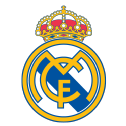
Real Madrid
2019-20: second (2.07 points per match)
Real Madrid averaged 2.4 points per match against teams in the top half of La Liga but only 1.9 against the bottom half. They beat Barcelona 2-0 on March 1 to go first in La Liga, but they sandwiched that huge win with a draw against 17th-place Celta Vigo and upset losses to both Levante (13th) and Real Betis (12th).
Motivation issues aren't entirely uncommon at the Bernabeu, but while that might be tolerated if combined with Champions League success, the success this year was minimal: They finished five points behind PSG in their group and lost at home to Manchester City in the first leg of the round of 16. FiveThirtyEight gave them only a 10% chance of advancing to the quarterfinals before play shut down. In that game, Los Blancos played with the inconsistency of a team undergoing a youth movement. The problem: This was not even a slightly young team.
Eight players logged at least 1,300 minutes in league play -- keeper Thibaut Courtois, defenders Sergio Ramos, Dani Carvajal and Raphael Varane, midfielders Casemiro, Toni Kroos and Luka Modric and forward Karim Benzema -- and their average age was 29.8. Four were 30 or older, and that doesn't include Gareth Bale (30) or Marcelo (31), who each logged over 900 minutes. It also doesn't include prized acquisition Eden Hazard, who will turn 30 next season and played in only 10 league matches this year due to a number of injuries.
Biggest strength: Duh, talent and money
Nobody throws cash at a problem like club president Florentino Perez does, and we're going to assume this remains the case even when we emerge into a post-coronavirus universe. While that can sometimes result in an aging and frequently injured squad of post-peak studs (think: 2005-'08 New York Yankees), this team is forever just one or two perfect signings away from putting up 90-plus points and winning the Champions League (think: 2009 Yankees). This is doubly true when you've got some young studs.
Midfielder Federico Valverde (21) and left-back Ferland Mendy (24) each logged over 1,100 league minutes, players out on loan from Real such as Martin Odegaard (Real Sociedad) and Achraf Hakimi (Borussia Dortmund), both 21, looked great this year and 19-year-old Vinicius Jr. oscillated between very good and brilliant in each of his past three pre-stoppage matches. The combination of these guys continuing to develop, a higher percentage of the superstars staying healthy and the right acquisition or two -- and there's always an acquisition or two -- could easily create a team that runs roughshod.
Biggest concern: They had money and talent this year, too -- and last year
Manager Zinedine Zidane knows as well as anyone how to relate to superstars, but if motivated and talented players can't win on their own, he isn't the type to have a detailed tactical Plan B or C. That's fine most of the time, but Real have been missing something since Cristiano Ronaldo left for Juventus. Simply hoping that Vinicius quickly becomes a superstar and fewer 30-and-over stars get hurt might not right that ship.
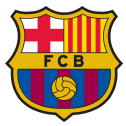
Barcelona
2019-20: first (2.15 points per match)
The most important thing you need is talent. Obviously. But if you want to achieve at the highest level of the sport, you probably need a chunk of talented players reaching their peaks, or close to it, at the same time. When Liverpool won the Champions League in 2019, 79% of its minutes went to players between 25 and 29 years old, and while the best teams don't typically reach that level, no Champions League winner going back to 2011 was below 42%.
Barcelona were at 33% in La Liga play this year. If the same players got the same distribution of minutes next season, it would be 31%, as attacker Antoine Griezmann ages out of this range and only midfielder Clement Lenglet ages in. Among the 13 field players receiving at least 900 minutes this year were two 33-year-olds (Pique and Luis Suarez), three 32-year-olds (including Leo Messi), and two 31-year-olds (Sergio Busquets and Jordi Alba).
Biggest strength: The floor is high
With this aging core, Barca were still potentially on their way to a fifth league title in six years, worthy competition or no. The Blaugrana were still alive in the Champions League, too: FiveThirtyEight gave them an 87% chance of advancing to the quarterfinals and an 11% chance of winning the whole thing. For a roster that is well past its sell-by date, you could do worse. When you've got Messi and mountains of money, you're going to be awfully good even when you're not good enough.
Still, one expects more. When Quique Setien took over in January he stabilized the lineups and reinforced Barcelona's possession-heavy identity, but there were still losses -- to Valencia and Real Madrid in league play, to Athletic Bilbao in the Copa del Rey -- that showed how flawed this team is when its core has a collective off day.
Biggest concern: It takes a while to build roster balance (and age comes for even Messi)
If Messi isn't the best player in the world at the moment, he's still in the top three, just about. But it bears mentioning that his expected goals per 90 minutes average has now dropped for six consecutive years. After averaging 1.0 per 90 from 2011 to '14, he fell to 0.91, then 0.86, 0.83, 0.82 and 0.81 before slipping to 0.72 this year. It is at least a reminder that age is unbeaten even if Messi is probably going to fight it for a while longer. But that battle makes the lack of youth on this year's squad even more worrisome.
Midfielders Frenkie de Jong (22) and Arthur (23) could be mainstays for a while, and there's potential on the wings in the form of Ansu Fati (17!), Carles Perez (22) and the oft-injured Ousmane Dembélé (22). But there are a lot more "When Player X retires/leaves, who replaces him?" questions than there are obvious answers. Barca could clearly go on a spending spree to address holes, but sometimes it takes a while for new pieces to properly integrate. High floor or no, it might take a while to build a squad that has the typical Barca ceiling again.
GERMAN BUNDESLIGA
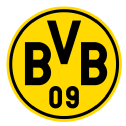
Borussia Dortmund
2019-20: second (2.04 points per match)
In 2019-20, Borussia Dortmund became an extreme version of itself, and it was glorious. Long associated with aggressive football and young talent, BVB scored at least three goals in 12 league matches and allowed three goals six times. They played two 3-3 draws, won a 5-3 shootout at Augsburg and lost a 4-3 shootout at Bayer Leverkusen. Within Europe's five richest leagues, only Atalanta matches featured more goals, for and against.
Borussia were not only prolific, they were good, too. Despite an early-season funk (14 points from 10 league matches) and despite the fact that Bayern haven't lost since early December, BVB remained only four points back from the league leaders at stoppage time. Since adding Norwegian wunderkind Erling Haaland in January, they dropped only three points in league play and nearly took down PSG in the Champions League round of 16. They were playing at a high level despite fielding a lineup full of players outside of their prime.
Biggest strength: Nobody puts together a young core of talent like BVB does
Of the 13 players who logged at least 900 minutes in league play for Borussia, only three players were between the ages of 25 and 29, and one of them was goalkeeper Roman Bürki. (The other two: winger Thorgan Hazard and midfielder Raphael Guerreiro.) The most minutes went to Madrid loanee Achraf Hakimi, with 19-year-old attacker Jadon Sancho not far behind, while a set of veterans -- midfielder Marco Reus, defender Mats Hummels, defensive midfielder Axel Witsel, fullback Lukasz Piszczek -- also played key roles.
Ultimately, it was impossible to watch this team and not think about what it could become if the young core remained intact. Sancho and Haaland (also 19) are already among the best in Europe at their positions, Hakimi is supremely underrated and American winger Gio Reyna (17) was acquitting himself well before play halted. Plus, BVB boasted a base of solid to strong players about to reach their respective primes: Manuel Akanji in defense, Guerreiro, Julian Brandt and Emre Can in midfield, etc. If this band stayed together, it would dominate Europe in three to five years.
Biggest concern: The band isn't designed to stay together
Since dealing with near-bankruptcy at the turn of the century, BVB have established a fiscally conscious model of acquiring and developing young players, winning with them before allowing them to move on to richer clubs. Hakimi might return to Real Madrid this summer (he's been in Germany on loan for the past two years), and it's been assumed for a while that Sancho will leave for the Premier League this summer, as well. It's only a matter of time until Haaland ends up sold for an astronomical fee to complete the end of their latest cycle. (We're assuming astronomical fees will remain a thing post-coronavirus.)
At their peak with Jurgen Klopp in charge, BVB found a level of play almost no one in Europe could match despite their youth. We'll see if they can hold on to some of these pieces long enough to make runs at a league title or big European success.
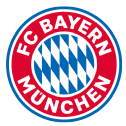
Bayern Munich
2019-20: first (2.2 points per match)
Bayern's season began as its 2018-19 season did: with the club dropping early points and generally making life harder than it needed to be. On Nov. 3, manager Niko Kovac was let go with Bayern in the middle of a Bundesliga logjam in which the top nine teams were separated by just five points.
Assistant Hansi Flick was named caretaker manager, and he's done so well that they've since extended his tenure through 2023. After a couple of tight, early losses, Bayern ignited in a particularly Bayern way. Since a Dec. 7 loss to Gladbach, they dropped just two points in league play and had eased to a semi-comfortable league lead in 2020 despite mostly brilliant play from Borussia Dortmund and only one loss by RB Leipzig. They also advanced to the semifinals of the DFB-Pokal (German Cup) and thrashed Chelsea in Stamford Bridge in the first leg of their Champions League round-of-16 matchup. With Liverpool faltering, Bayern were likely the best team in Europe at the time of the stoppage.
Biggest strength: The turnaround was organic and sustainable
I wrote about Bayern's rebound back in early February, and despite losing first Ivan Perisic and then all-world forward Robert Lewandowski to injury, they continued to roll. They weren't getting lucky from an injuries or expected-goals standpoint -- they were just dominating.
Die Roten are still relying somewhat on older players -- Lewandowski, keeper Manuel Neuer, versatile forward Thomas Muller and defender Jerome Boateng had all logged at least 1,100 minutes in league play, and Perisic was on his way to that before injury. But after a couple of years of tinkering with their roster, a young core has emerged. First-choice central defenders Lukas Hernandez and Niklas Sule will enter the prime 25-29 age range next year, oft-injured winger Kingsley Coman will be 24, wunderkind Alphonso Davies will be 20 and key figures such as Thiago, Joshua Kimmich and David Alaba will all be between 26 and 29. (So will Barcelona loanee Philippe Coutinho if they move to retain him.)
- Coronavirus cancellations, reactions across all sports
- Pep Guardiola's mother dies after contracting coronavirus
- Toe Poke: Dybala humbles Bale in FIFA 20 charity match
- Bundesliga teams returning to training
Biggest concern: The front and back
Nine years ago, Bayern all but completed its soon-to-be European championship roster by announcing the addition of Schalke goalkeeper Manuel Neuer. This past January, they announced the acquisition of Neuer's likely successor: Schalke's Alexander Nubel. (Poor Schalke.) But it's not like Neuer is going to give up his perch all that easily, and succession plans tend to work a lot better on paper than in reality.
Meanwhile, maybe the one true gap in Bayern's roster comes up front. With Lewandowski injured, Bayern handed the keys to 18-year-old Joshua Zirkzee, who scored in the 6-0 blowout of Hoffenheim. (He also scored twice as a substitute coming off the bench in December.) His poaching ability and touch in front of the goal are clearly high-end, but he's 18. Lewandowski will turn 32 next season, and while he was as good as ever, injury risks will likely continue to increase. Do they like Zirkzee that much, or might they need to acquire a fallback option for if Lewy misses more time in 2020-21?
ITALIAN SERIE A

Inter Milan
2019-20: third (2.16 points per match)
Almost a decade ago to the day, Internationale were on top of the world. No one had more directly benefited from Juventus' sojourn as a Serie B heavyweight following the 2006 match-fixing scandal: Inter had won five consecutive Serie A titles from 2006 to '10 and taken the 2005, 2006 and 2010 Coppa Italia trophies to boot. On May 22, 2010, they took down Bayern Munich to win their Champions League title in 45 years. They would reach the UCL quarterfinals while finishing second in Serie A and winning another Coppa in 2011, but since then, they haven't finished higher than fourth in the league and haven't reached even the Europa League quarterfinals.
Endless managerial churn, ownership changes and misguided spending gestures (Geoffrey Kondogbia in 2015, João Mário and Gabriel Barbosa in 2016, Radja Nainggolan in 2018) did nothing but reinforce stagnation.
With the hiring of former Chelsea manager Antonio Conte and the acquisition of Man United forward Romelu Lukaku after an uneven spell, however, we began to see a plan coming together this season. Inter began the campaign on fire, dropping only five points in league play through Dec. 1 and holding their own in a tough Champions League group (three one-goal losses to Barcelona and Borussia Dortmund knocked them to the Europa League). They suffered key road losses to both Lazio and Juventus in February and March, which all but knocked them out of the Serie A race, but they were still likely to finish third or higher for the first time in nine years.
Biggest strength: Maybe the best age balance this side of Anfield
Not including keeper Samir Handanovic (35), the four players logging over 1,900 minutes in league play were 25 (defender Milan Skriniar), 26 (Lukaku, an expensive acquisition who has actually played like it), 27 (midfielder Marcelo Brozovic) and 28 years old (defender Stefan de Vrij). January acquisition Christian Eriksen from Tottenham is 28, too. Forward Lautaro Martinez (22) was complementing Lukaku well up front, while midfielders Nicolo Barella (23) and Stefano Sensi (24) and defender Alessandro Bastoni (20) were holding their own. While Inter were quite likely to fall short of Juve and Lazio in 2020, they might have the best young core of the three teams. In short, they're set up well for the coming seasons.
Biggest concern: What are they actually excellent at?
Sturdy roster construction and high-end talent can take you pretty far, but it's hard to figure out how Inter actually stand out, either in the league or on the continent. The offense was strong, but Lazio's was better. The defense was solid, but Juve's was better. Their pressing numbers were good, but Atalanta's were better. They play a methodical game, but their pass and possession numbers are above average, at best. They have solid finishing talent but no natural table-setter (only 33-year-old Antonio Candreva had more expected assists than Lukaku this year). Inter could be very good for a while with this core, but they're probably still a player or two away from again becoming European contenders in any capacity.

JUVENTUS
2019-20: first (2.42 points per match)
Off the pitch, it's safe to assume the acquisition of Real Madrid legend Cristiano Ronaldo in 2018 has worked out for both parties. Real Madrid was comped a handsome €100 million, and I'm guessing Juve have made a solid amount of money from sales of Ronaldo's No. 7 shirt alone. (Probably not to the tune of €100m, but you never know.)
Jersey sales aren't everything, of course, and on the pitch, things haven't really worked out for either club. Madrid have been lacking an identity for two years running, and while Juve continues to play about as well as ever in the league -- they averaged 91 points per season while winning seven straight Serie A titles before his arrival, posted 90 last year and were on pace for 92 this year -- you don't acquire Cristiano Ronaldo to win the league. You acquire him to win the Champions League. Juve were upset by Ajax in last year's quarterfinals and were in danger of losing their round-of-16 tie with Lyon in 2020 before play was stopped. On top of that, thanks to a torrid run by Lazio, they were in danger of watching their Serie A streak vanish, too.
Biggest strength: A lack of specific weaknesses
There's no single thing wrong with Juve. Things got weird for a while, with Ronaldo struggling to score while the team did fine, then Ronaldo catching fire while the defense briefly wilted. But for the season, they ranked 10th among 98 teams in the big five leagues for goals allowed per match and 14th in goals scored. They established a rich team's level of possession (10th, at 59%), they pressed high and well (10th in possessions won in the attacking third) and they created a ton of chances (third in chances per possession).
Granted, their defensive breakdowns were more frequent than normal (they were 49th in opponents' chances per possession), and they were perhaps lucky to allow such a small number of goals. But they were also unfortunate not to score a bit more.
Biggest concern: Age is the great equalizer
Next year, defender Alex Sandro, DM Miralem Pjanic, keeper Wojciech Szczesny and attacker Aaron Ramsey will all turn 30. Defenders Leonardo Bonucci and Juan Cuadrado are 32 and 31, respectively, midfielders Blaise Matuidi and Sami Khedira are 32, defender Giorgio Chiellini is 35 and Ronaldo is 35. (Keeper Gianluigi Buffon, of course, is well past 40.)
Next year, if Juventus were to distribute the same minutes to the same players it did this season, only 20% of them will go to players between 25 and 29, nearly the fewest in the big five leagues. There are, of course, some excellent young pieces -- defenders Matthijs de Ligt and Merih Demiral, midfielder Rodrigo Bentancur -- plus Juve loan out an absurd number of youngsters each year. Still, all of soccer's superpowers have as much young talent, and Juve fielded an almost entirely 29-and-over rotation this year. It's going to be awfully hard to catch up to the Champions League field while undergoing a major roster overhaul at the same time and remaining out in front of Italian soccer.
FRENCH LIGUE 1
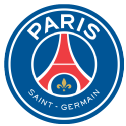
Paris Saint-Germain
2019-20: first (2.52 points per match)
Just under nine years ago, Qatar Sports Investments bought both PSG and, for all intents and purposes, the Ligue 1 title. The giants won six of seven league titles beginning in 2013 and were on pace for an easy, 19-point win over Marseille in 2020. In that span, however, only heartbreak has awaited in the Champions League. They have yet to reach even the semifinals, and in 2017, they allowed a classic comeback to Barcelona in the round of 16, losing the second leg 6-1 after winning the first 4-0.
With a second-leg comeback against Borussia Dortmund this year, however, PSG had advanced to the quarterfinals for the first time since 2016, and FiveThirtyEight listed them as the No. 3 title favorite behind Bayern and Manchester City. Perhaps no club in soccer wants the UCL to be resumed to its completion more than PSG does.
Biggest strength: PSG is far too good for the rest of Ligue 1
Aside from a stunning run from AS Monaco in 2017 -- Monaco rolled to 95 points, then proceeded to sell most of its stars (including Kylian Mbappe to PSG) -- no one has mounted much of a sustained challenge during this title run. PSG averaged 89 points in their six title years and were on pace for 96 this season; the runners up averaged 74.3.
Among other things, this means you don't have to wear out your stars. Only one PSG player had topped 2,000 minutes in league play so far this season (Angel Di Maria), while 23 had played at least 400. Compare that to the six other blue bloods in good position to win titles in the big five leagues (Liverpool, Barca/Real Madrid, Juventus, Bayern/BVB): They averaged 3.5 players over 2,000 minutes and 18.2 over 400. Granted, some of that was unintended: Mbappe, oft-injured attacker Neymar and defenders Thiago Silva and Abdou Diallo are notable stars who spent serious time on the injured list. But they were easing to another easy win, and their stars hadn't put an extreme amount of mileage on the tires.
Biggest concern: PSG is far too good for the rest of Ligue 1
It is part of the Pep Guardiola lore that his first Bayern team (2013-14) won the Bundesliga too handily and clinched too early, thereby losing focus and form in the weeks before their Champions League semifinal loss.
These past three seasons, PSG have basically played a two-match schedule: the two legs of the Champions League round of 16. And two of those three "seasons" ended in dramatic, late collapses. (In addition to 2017's collapse against Barca, they also allowed Manchester United to advance with a goal in the fourth minute of stoppage time in 2019.) They will remain the richest club in France for the foreseeable future, but it wouldn't hurt if Marseille's current improvement continued into future seasons or if Monaco were to build a more long-term plan. As things stand, PSG face almost no must-win matches outside of Europe.
